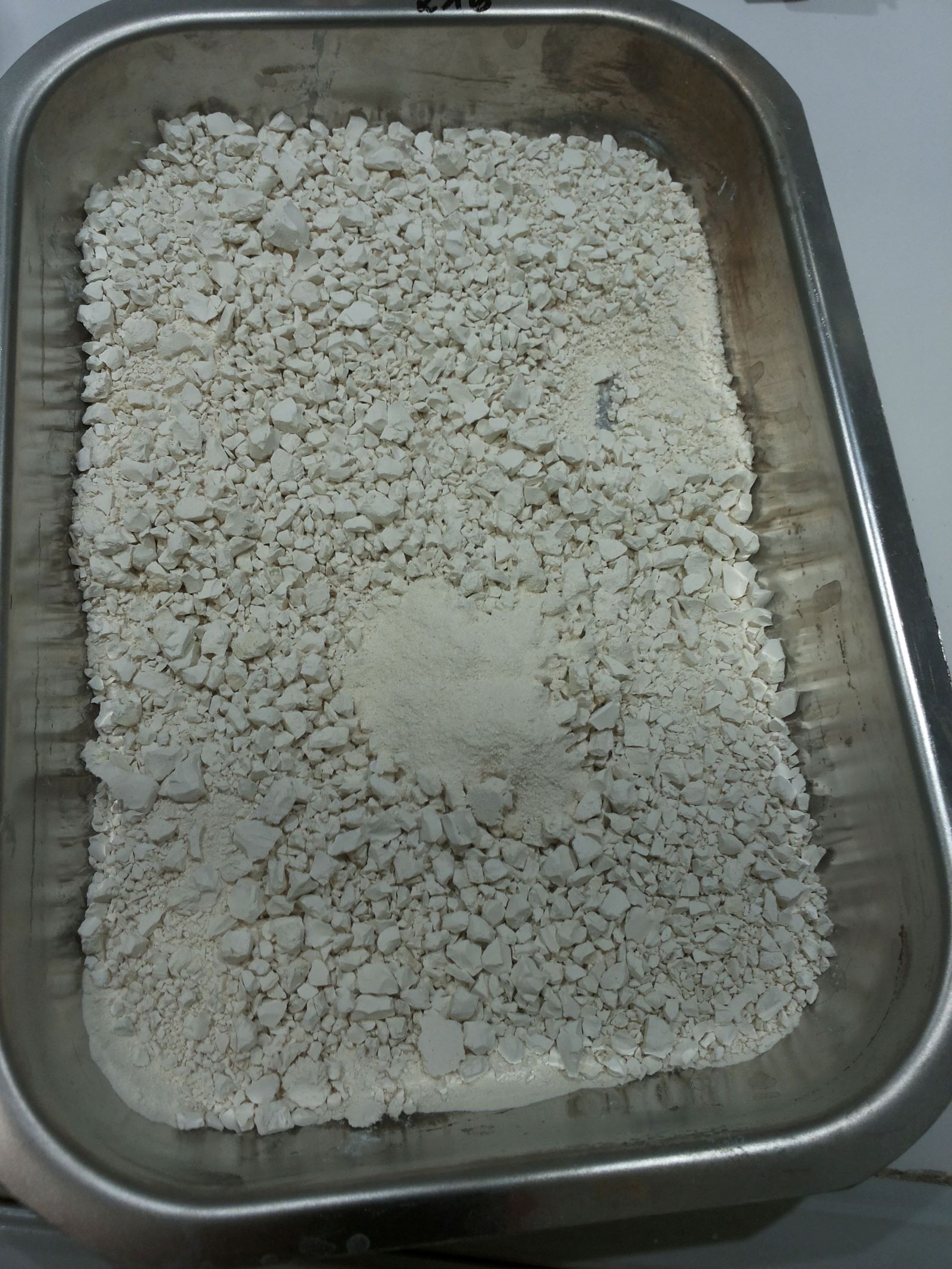Project PRil completed
Germany’s new Waste and Sewage Sludge Ordinance requires large sewage treatment plants to recover phosphates from sewage sludge or ashes as of 2032. Conventional recovery technologies are costly and chemical-laden. A new technology now offers a more affordable, pollution-free alternative. Fraunhofer researchers helped scale up the process.
As gardening enthusiasts will attest, flowers, turnips, tomatoes and the like scarcely thrive without fertilizers. Farmers rely primarily on preparations containing phosphate to fertilize their fields – with good reason, for phosphorus is a building block of all life and an essential nutrient plants cannot do without. With 75 percent of the world’s deposits sited in Morocco and the Western Sahara, there is a potentially critical choke-point in the phosphorus supply chain. In 2008 and 2009, bottlenecks in the pipeline and speculation on mineral markets put the squeeze on the world’s supply lines. The price of phosphorus shot up by 800 percent. This prompted the European Commission to add this mineral to its hit list of top-20 critical raw materials. The German government also took action. Starting in 2023, operators of large sewage treatment plants will have to submit a plan for recovering phosphorus. Although farmers can spread the ash of incinerated sewage sludge directly on their fields, plants are not able to make much use of the phosphorus in it. Besides, this ash contains pollutants such as heavy metals that are best kept far from farmed fields. There have been attempts to recover the phosphorus in sewage sludge ash using wet chemical processes, but they require vast quantities of chemicals.
Plant-available phosphorus, recovered in a cost-effective, ecofriendly way
Taking a very different approach, the experts at Fritzmeier Umwelttechnik GmbH & Co. KG are developing a technology called P-bac. This company joined forces with the Fraunhofer Research Institution for Materials Recycling and Resource Strategies IWKS at Alzenau and ICL Fertilizers Deutschland GmbH to scale this tech up from the lab to a pilot plant. Funded by the German Federal Ministry for Food and Agriculture, this project goes by the name of “Phosphorrecycling – vom Rezyklat zum intelligenten langzeitverfügbaren Düngemittel – PRil” (phosphorous recycling – from recyclate to smart, persisting fertilizer).
“We assisted with efforts to scale up the water recycling process as well as with the residual material recycling process, feasibility studies, and analysis,” says Dr. Lars Zeggel, project manager at the Fraunhofer IWKS. “The phosphorus we recover from the ash with this innovative process is 50 percent plant-available in a water-soluble phosphate fertilizer. In contrast, the phosphate in pure sewage sludge ash is all but unavailable to plants.” On top of that, the substrate is largely pollutant-free and the relevant pollutants can be reduced by more than 90 percent. Fertilizers sourced from recycled sewage sludge are also remarkably affordable, as a feasibility study conducted by the Fraunhofer IWKS showed. The phosphate produced in this manner costs around two euros per kilogram. Fertilizer produced with wet chemical processes comes to at least four to six euros per kilogram. Phosphorus from recycled sources is still more expensive than the primary phosphorus from Morocco, which stands at 70 cents per kilogram P2O5. However, in sharp contrast to recycled phosphorus, primary phosphorus increasingly contains pollutants such as cadmium and uranium.
Letting bacteria off the leash
Fritzmeier developed the process for recovering phosphorus from sewage sludge. Rather than adding chemicals such as sulfuric acid to the sludge ash, these experts let bacteria do the work. The bacteria absorb carbon dioxide from the air – a beneficial side-effect – and produce sulfuric acid by using added elemental sulfur to extract phosphorus from the ash. Held in living conditions selected to facilitate this process, other bacteria absorb the phosphorus, enrich it, and release it again when this environment changes. This produces solid iron phosphate precipitates that can be separated from the leachate. Researchers at the Fraunhofer IWKS looked into several aspects of this, including the process water. “It takes around ten liters of process water to recycle one liter of sewage sludge ash,” says Zeggel. Once the phosphate has been extracted, this water may be reused immediately to propagate bacteria. The cycle can be repeated several times before the water needs to be desalinated. “We have been able to adapt the membrane filtration so that we can now remove 98 percent of the sulfate – that is, sulfur – from the water and ultimately circulate 75 percent of the process water,” says Zeggel. This leaves a lot less process water to be disposed of and conserves a great deal of energy. The procedure is not only ecofriendly; it also eliminates a major cost factor. The energy required to evaporate the water is one of the biggest cost drivers. The research team was able to reduce operating costs significantly with the benefit of membrane filtration. The entire process is ready for use on a hundred-liter scale.
